
The Future
How will our progression occur?
Sooner rather than later, the United States, China, Russia or the European Union
(most likely some combination of these) will retrace the first steps into space.

Eventually, we will put a moon base up and become a multi-planet species.
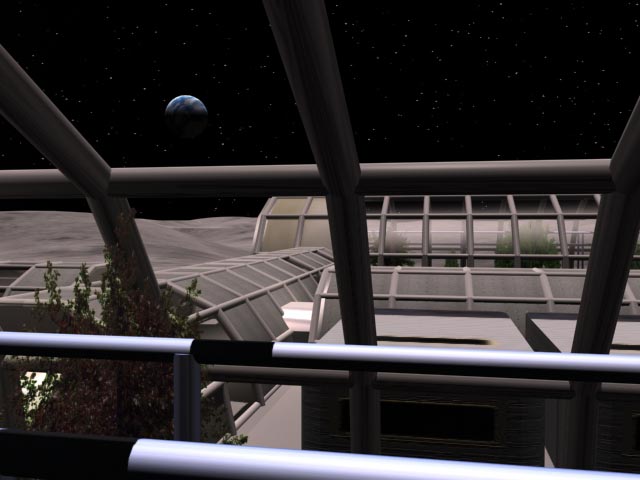
Earth appears about 4 times as large in the moon's sky as the moon does in the Earth's sky.
The astronauts on the moon in the late 1960s and and early 1970s could even see the continents on Earth!
NASA today has a clear mandate and a target deadline of the year 2018 to return, this time to stay, and build the base.

The ultimate goal of using the Moon? Since it has no atmosphere, it can't be 'transformed' into a new and breathable
place, but in the next century, artificial 'biosphere bubbles,' like those of Arthur C. Clarke's 1954
'Exploration of the Moon,' can be a reality.
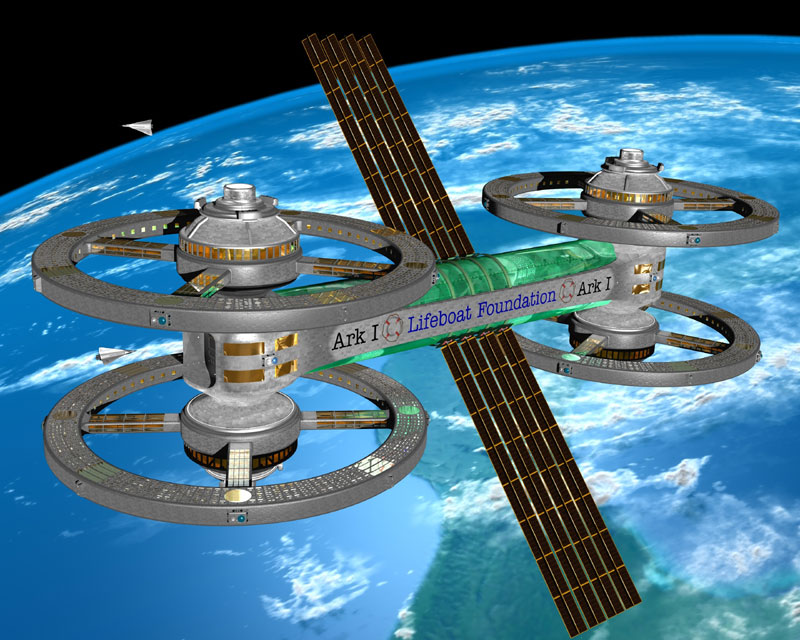
After the return to the Moon, in the early 2020s, a special place in space out past it, called
'Sun-Earth Lagrange Point #2,' will be visited by the United States and its allies. This place is
important because its gravitation is equalized in all directions, making it ideal for telescopes and
eventually, a large, stable, space station and staging area for missions further out. Here is a concept from the
Lifeboat Foundation of such a station, an entire orbital colony, being constructed in orbit before being moved to SEL2.
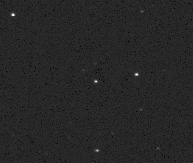
Some Asteroids cross the path of Earth and the other inner planets. This is bad because
they can strike the Earth, but good because they will always be around 'in the neighborhood'.
Upon the establishment of a presence at Sun-Earth Lagrange 2 (SEL-2), the US and its allies will
perform a stunt demonstrating the ability to fly to a near-Earth object (probably a small asteroid), carry out a sampling
mission, and return to Earth successfully. Once this 3rd step is completed, the table will be set and the technology in place...
...for Mars

By the late 2020s, astronauts will be orbiting Mars, landing on its two moons, Phobos and Deimos, and finally
will descend to the surface of the planet. Unlike the moon, our friendly red neighbor has an atmosphere, which can be adjusted
in its elements, and thereby terraformed into an eventual Earth-like world. So with Mars in the longterm, we will be engineering a new home.
In this view, we see Mars over the horizon of Phobos, one of its two tiny moons.
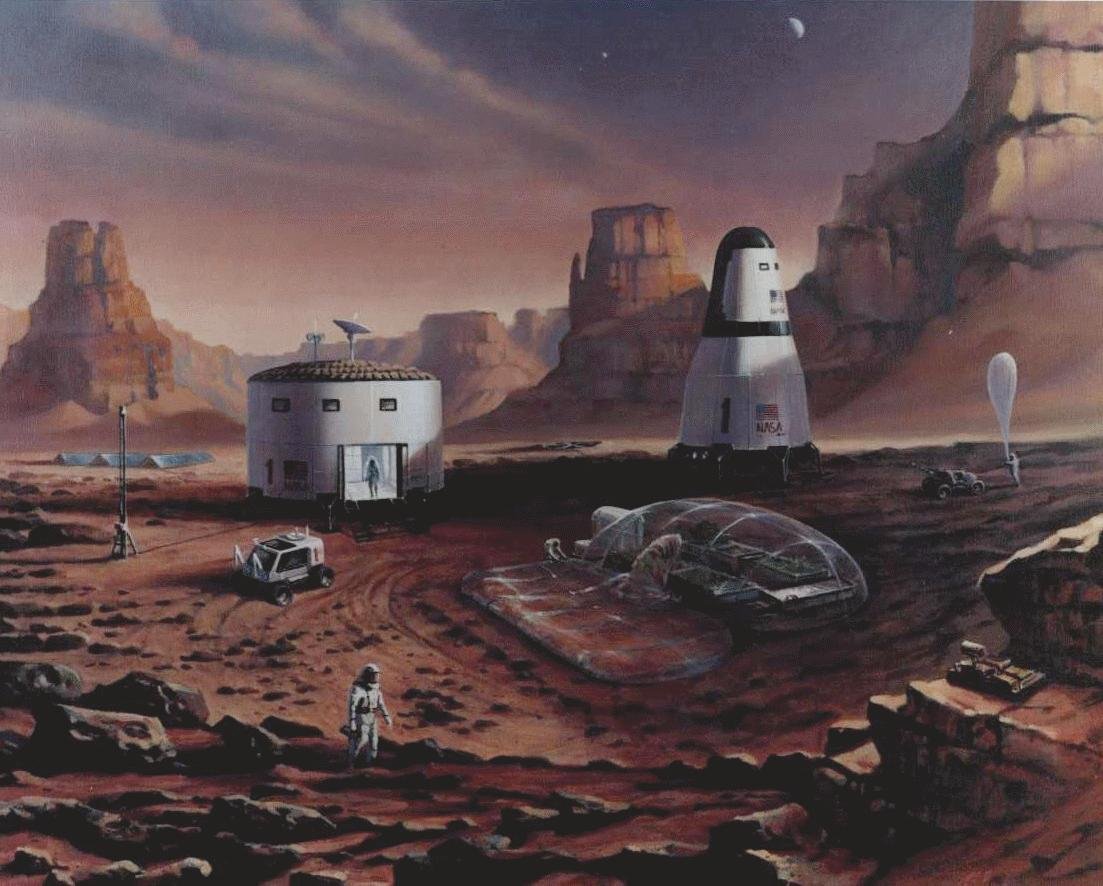
In the short run (decades), a series of early bases like this one will precede more elaborate full colonies by the end of the century.
These colonies will most likely be 'bubble-technology' cities, of the US, Europe, Russia, China and Japan, of the kind seen
as the ultimate goal of the Moon. Of course for Mars, the plans are even bigger...
Here we see astronauts beginning the first base.
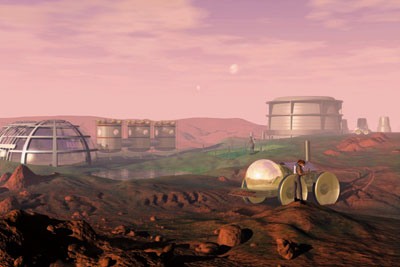
Terraforming Mars into an Earth like planet is a step-by-step process, this is a middle stage where we heat up the
atmosphere by unlocking the polar ice caps with plants, our best friends in the terraforming process. Interestingly,
Mars has a pink sky and blue sunsets, exactly the opposite of what we have on Earth, with blue sky and reddish sunsets.
The Red Planet had had oceans and rivers once, indicating a good environmental temperature between 32 and 212 degrees
(0-100 c.) ...and with our intervention, it will again.

The Asteroid Belt is, unlike in this picture from Fortune Magazine, not dense at all. No crashing into then ala Star Wars. However,
it is a great place for mineral exploitation. But, asteroids are located not only in the Main Belt, but all over the place.
In fact, this kind of mining could take place very close to home, and not require much energy to do it.
(less than getting to the Moon and back, for example).
...and onwards we fly to the 5th planet: The Jupiter System.
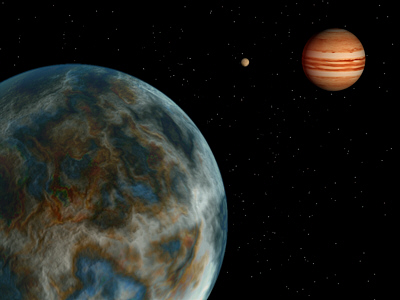
Down the road a bit (2050-2100), when we have firm settlements on Mars, advanced bases on the Moon, space stations,
asteroid belt mining and routine interplanetary shuttle systems between them, mighty Jupiter, an entire Solar System in minature, will beckon.
Here we find four large moons, among many tiny moonlets. Jupiter itself is unsuitable for colonization, and three of the four
large moons lie inside Jupiter's radiation belt, which makes any bases on them in need of shielding. However, Europa's ocean
provides such shielding, Ganymede requires only a little, and the 4th moon, Callisto, is ready for large bases as it is.
Ganymede, the largest moon in the solar system, is shown here with Europa and Jupiter in the background.
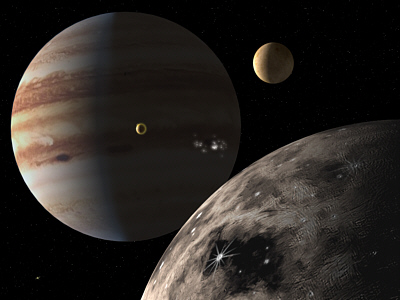
Only 50 miles smaller in diameter than the planet Mercury, this moon, Callisto, is waiting for a human presence.
It orbits the furthest out from the planet, outside its radiation belt, and a base here would certainly have
the best view... as here with Europa and Io in front of Jupiter, and one of the ever present lightning
storms illuminating the dark side of the planet!

On the surface, we find Callisto a large moon of ridges and craters... a good spot for a base.
Using solar power in space as a free source of endless energy will certainly be the best method of
generating power. Already on Earth, we have conducted bio-sphere experiments successfully
for indoor, hydroponic farming. These lunar bases would operate on the same principles, writ large.
Finally, Callisto is the best place for an outpost serving as 'way-station' for further exploration out.
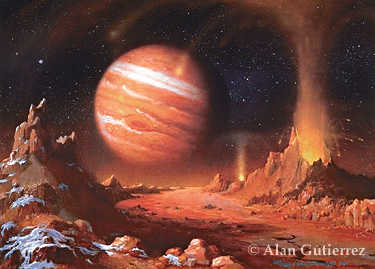
But unless you incline towards the occault, the 3rd largest moon of Jupiter, Io, is not a nice place with a nice view!
It is the most violent place in the solar system, so we won't be too interested in this particular one. Exactly the same size as our moon,
Io, is not like it at all. It has volcanoes constantly firing molten lava up into space from its interior, only to fall back slowly to the surface.
And on top of it all, Io is not a good neighbor...
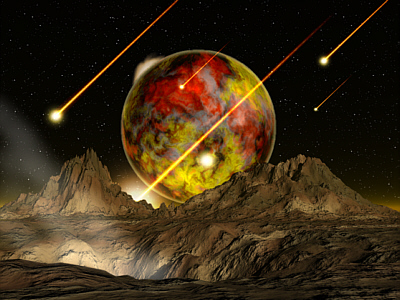
The small moon Amalthea is positioned between the planet and Io, seen here. It won't be any help to us either,
because it is always being harassed by refuse from Io's volcanic regurgitations.
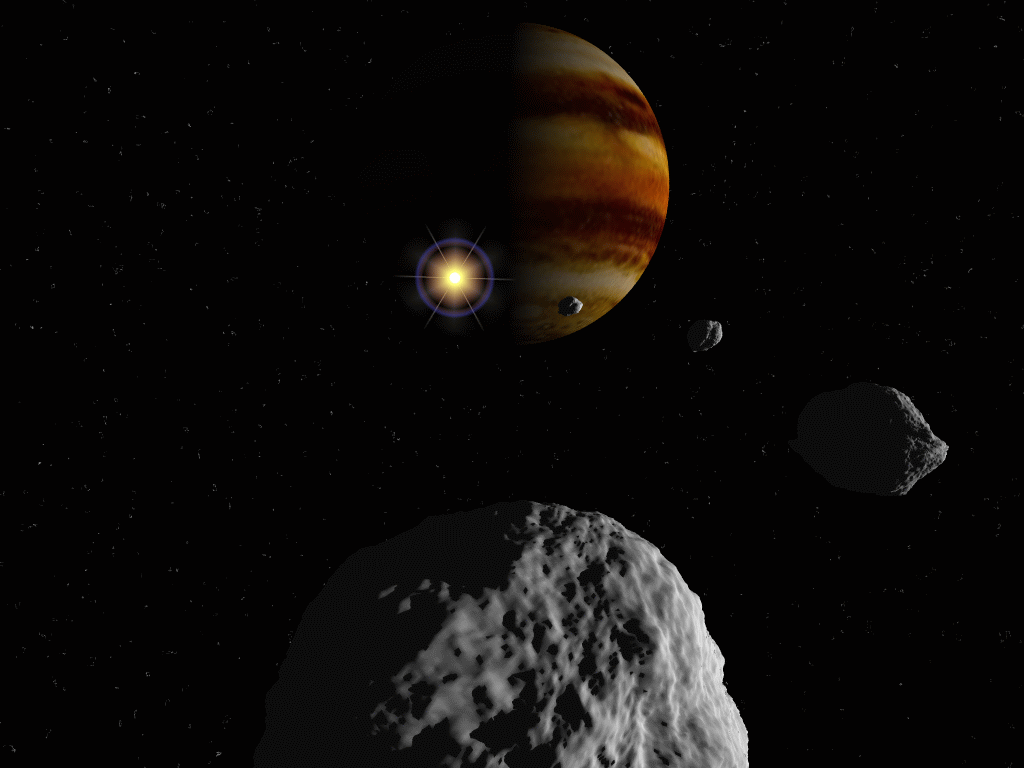
In 1994, comet Shoemaker-Levy 9 broke apart in space and separate pieces slammed into Jupiter, offering astronomers
on Earth a spectacular sight. But more, it offered an extremely grave reminder: space cannot be ignored. Soon, people
began to consider the possibility that next time, it may be Earth in the crosshairs instead of Jupiter. The films Armaggeddon,
Deep Impact and Asteroid showcased this possibility, and then it was forgotten. But the threat is always there. Only the conquest
of space grants the enabling powers to combat this threat, and so the choice is: go to space, or face the consequences!

Shown here with Io and the giant planet beyond, Europa is astounding because its entire surface is the frozen top of a world ocean made of... WATER! Now, with space station technology in the future, its seems not a far stretch to adapt it to water... a sealab. Further on, we may be able to melt the ice, harness the water and either create a waterworld of floating cities and such, (like Flostam Paradise in the movie 5th Element), or even engineer an atmosphere and create another kind of paradise. Even today, we have the power and the robots (but not the funding) to drill through the ice and explore the ocean underneath, heated as it is by the geothermal interior.
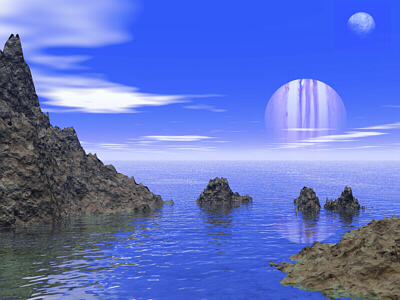
If we don't destroy ourselves now, or let nature destroy us, it is hard to imagine how incredible the future can be.
Its been 2000 years since Christ walked in Galilee, in a 1000 more, we could have Europa looking like this. Think about it.
Even so, a thousand years is a long time. In the meantime, our bases in the Jupiter System will be stepping stones for new ones...
...at Saturn.